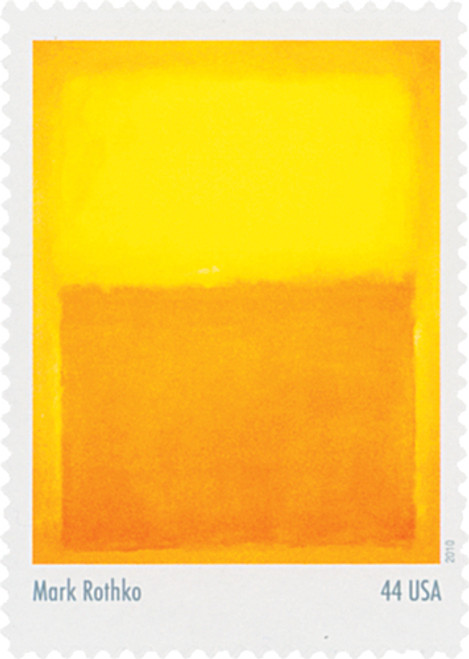
2010 44c Abstract Expressionist: Willem de Kooning
# 4444b - 2010 44c Abstract Expressionist: Willem de Kooning
$2.00 - $3.75
U.S. #4444b
Abstract Expressionists
Abstract Expressionists
Issue Date: March 11, 2010
City: Buffalo, NY
Printing Method: Lithographed
Perforations: Serpentine Die Cut
City: Buffalo, NY
Printing Method: Lithographed
Perforations: Serpentine Die Cut
Willem de Kooning – Asheville
Willem de Kooning (1904-97) believed “The attitude that nature is chaotic and that the artist puts order into it is a very absurd point of view... All that we can hope for is to put some order into ourselves.” De Kooning achieved this order in his art by reworking the image, despite its chaotic appearance.
After studying art for eight years in the Netherlands, de Kooning traveled to the United States as a stowaway aboard the SS Shelley in 1926. Early influences on his work included artist and critic John D. Graham, Pablo Picasso, Peter Paul Rubens, Michelangelo, Jean Auguste Dominique Ingres, and close friend Arshile Gorky.
Throughout his career, de Kooning experimented with several artistic styles, mastering each and moving onto another, although he found the greatest fame and joy in painting abstract. In works such as his 1948 oil painting, Asheville, de Kooning experimented with collage techniques to give his work a highly layered look. Over the course of several months, he scraped down and built up the surface of the painting, layering background images over foreground, giving the painting movement. De Kooning’s smeared brushstrokes and abstract style made him one of the most influential and copied painters of his time.
In 1964, he was awarded the Presidential Medal of Freedom, likely for his Depression-era government building paintings created for the Federal Art Project.
U.S. #4444b
Abstract Expressionists
Abstract Expressionists
Issue Date: March 11, 2010
City: Buffalo, NY
Printing Method: Lithographed
Perforations: Serpentine Die Cut
City: Buffalo, NY
Printing Method: Lithographed
Perforations: Serpentine Die Cut
Willem de Kooning – Asheville
Willem de Kooning (1904-97) believed “The attitude that nature is chaotic and that the artist puts order into it is a very absurd point of view... All that we can hope for is to put some order into ourselves.” De Kooning achieved this order in his art by reworking the image, despite its chaotic appearance.
After studying art for eight years in the Netherlands, de Kooning traveled to the United States as a stowaway aboard the SS Shelley in 1926. Early influences on his work included artist and critic John D. Graham, Pablo Picasso, Peter Paul Rubens, Michelangelo, Jean Auguste Dominique Ingres, and close friend Arshile Gorky.
Throughout his career, de Kooning experimented with several artistic styles, mastering each and moving onto another, although he found the greatest fame and joy in painting abstract. In works such as his 1948 oil painting, Asheville, de Kooning experimented with collage techniques to give his work a highly layered look. Over the course of several months, he scraped down and built up the surface of the painting, layering background images over foreground, giving the painting movement. De Kooning’s smeared brushstrokes and abstract style made him one of the most influential and copied painters of his time.
In 1964, he was awarded the Presidential Medal of Freedom, likely for his Depression-era government building paintings created for the Federal Art Project.








